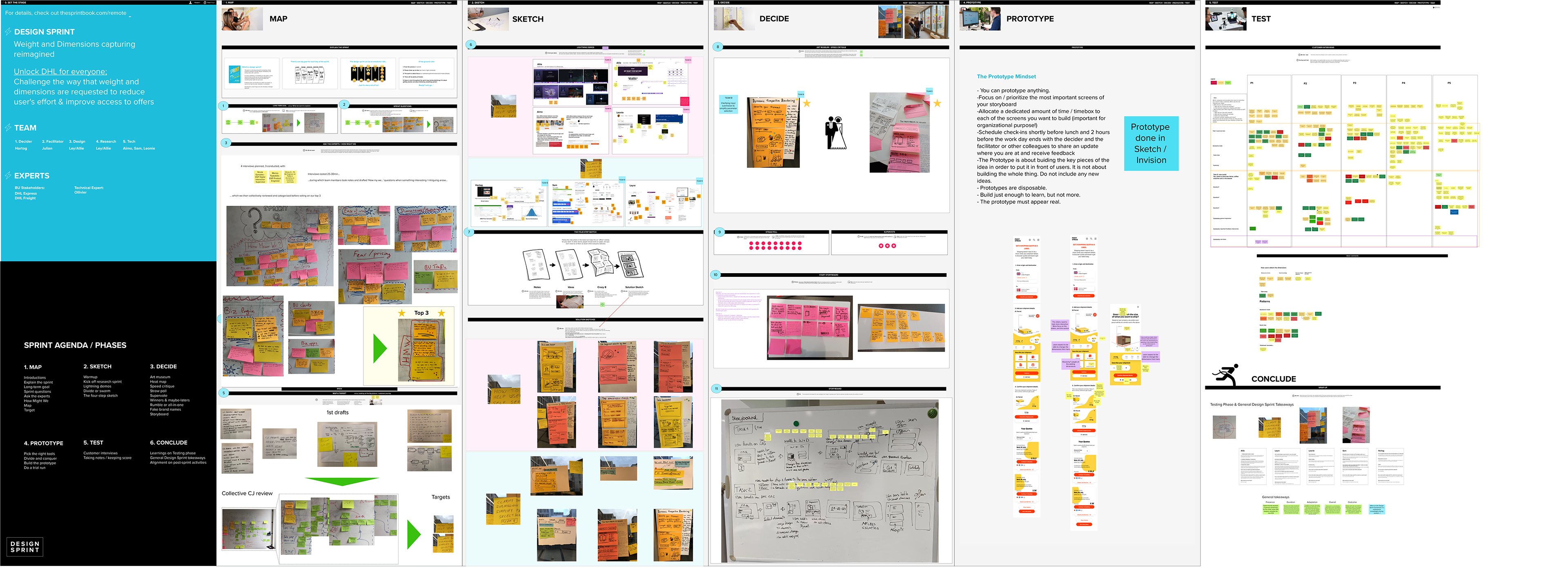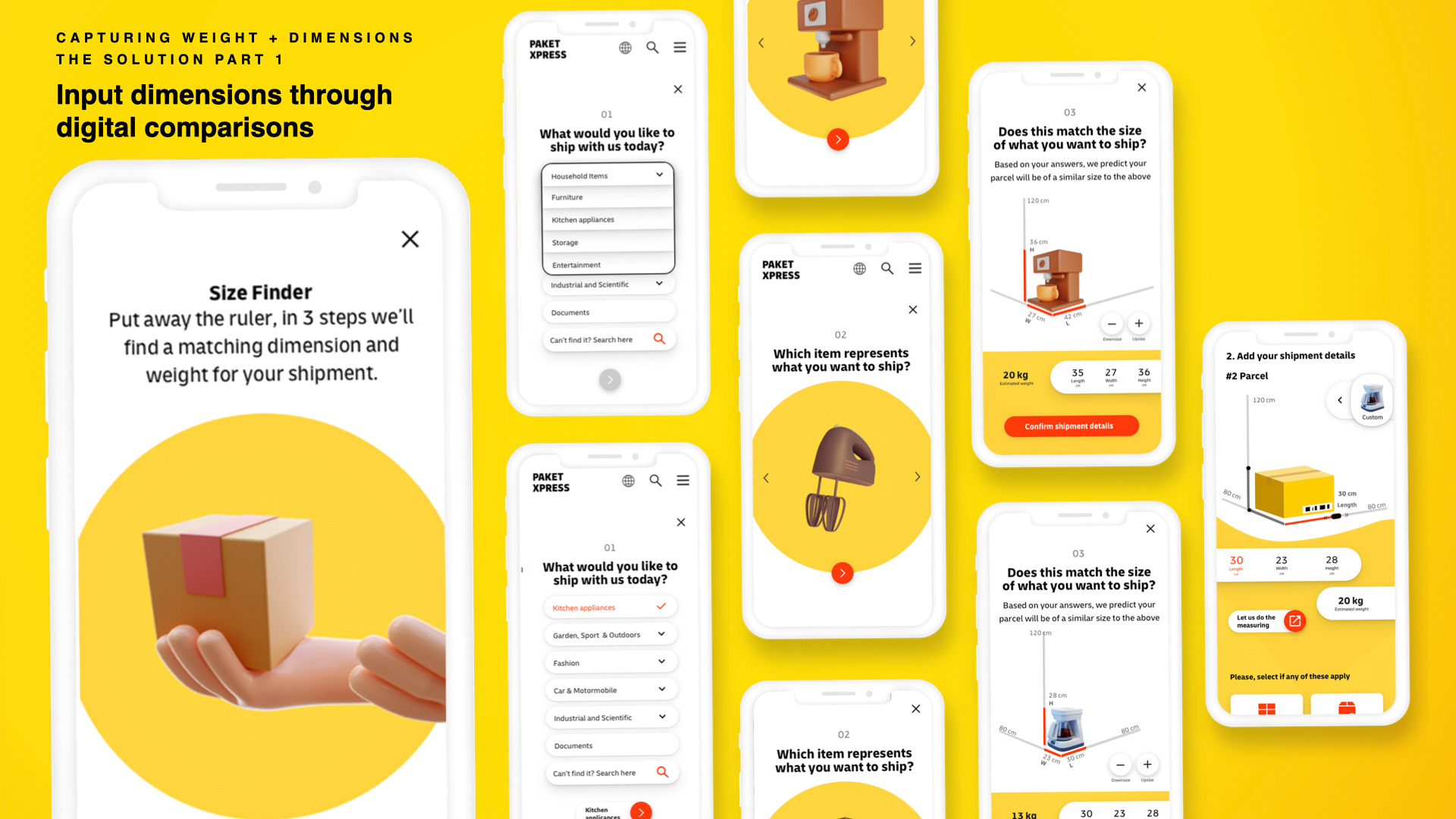The Problem:
Our users struggled to effectively use the platform's preset options to fill in crucial parcel information, such as dimensions and weight. The lack of data or tools to help estimate this information made the process frustrating and time-consuming. This resulted in errors and inefficiencies in the shipping process.
To tackle this issue, we decided to step outside our usual design constraints with an innovative and collaborative design sprint. This allowed us to quickly test new concepts in a risk-positive environment and foster cross-team collaboration.
Given that our team typically works remotely, bringing the right people together in person was crucial for building a compelling prototype and exploring bold, creative solutions following explorative design methods that encourage conversations that built onto of ideas to innovate with divergent thinking.

Design Sprint Activities covering Mapping the problem, sketching and ideation, deciding solution to define further and its subsequent user journey, prototyping and user research for quick validation

Establishing the Sprint Goal and Sprint Question

Sprint Questions we asked around our problem area

Generating HMW's from Expert Interviews

Grouping our How Might We's

Individual Note n Map exercises

Note n Map exercise to reinvent our User Journey based upon our opportunity areas and segments
The Solution (Part 1):
The sprint revealed multiple pathways for design development. One key idea was simplifying how users find pricing and enter parcel weight, especially when they don’t have scales or measuring equipment. We proposed a solution where users could compare their item to a database of known objects, allowing the system to estimate weight and dimensions. This would streamline the process, making it less like filling out a form and more intuitive for the user.




